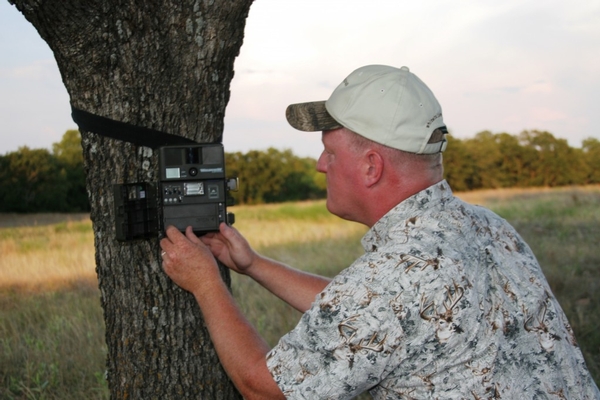
The Diverse Trail Camera

The foundation of any wildlife management program involves collecting survey data. Survey data may be collected in a variety of ways but consistency and trends are critical.
With recent advances in technology, the use of infrared-triggered cameras (trail cameras) may be used as an acceptable form of gathering such data, especially on properties that may not be conducive to spotlight or helicopter surveys. These devices have become an invaluable tool in the deer manager’s toolkit.
Trail cameras have matured over the years and they have come down in price to a point to where users can afford to own multiple units. With an adequate number of cameras, there is much more to be learned than initially meets the eye.
Obviously, users can get a good look at each year’s antler production, as well as adult sex ratio, fawn survival rates and estimate the buck population, but with multiple photographs of individual bucks, managers can formulate specific buck harvest recommendations by creating a hit list of known bucks. Specific bucks may be targeted for harvest and their general locations also known.
These devices also provide a good look at the overall herd health indices to learn how individual animals progress from year to year. Cameras can be used to gauge how successful (or not) your individual protein feeders are being utilized and if your feed pens are large enough for the deer to be comfortable in.
Trail cams can also be used to watch specific trails or corridors to understand deer travel routes for hunting purposes. They can tell you when the velvet is first shed or when bucks appear to be rutting (swollen necks, dark tarsals) to help determine when to rattle or use certain scents. Likewise they can tell you when the first antlers are shed in late winter/early spring and perhaps where to begin looking for them. Yet another valuable use is the ability they provide to help deter poaching.
Other uses include the ability to get a good estimate of raccoon density and perhaps feral hogs if you are not using a feeder pen. Some folks use them to scout for turkey roosts, poult production and squirrel density estimates as well as monitoring ponds for waterfowl activity or fish predation. Grain fields may be monitored to see when the first doves arrive or if geese or feral hogs are depredating crops in your absence.
Some folks use the more progressive cameras to text photos to their computer to monitor ranch gate or headquarters activities and some folks use them in DMP pens to monitor deer activity or count fawns. Cameras can be used to find wild or renegade cattle on the ranch, monitor water hole activities for wildlife or illegal aliens, and even monitor ranch road activities.
Needless to say, trail cameras have far exceeded their original intention. If you don’t have your own cameras out now, there is no time like the present to get them afield to gain a much deeper interpretation of your hunting area.
All photo and content herein is copyrighted property of Spring Creek Outdoors, LLC and may not be copied/reproduced or otherwise used in any way without express written permission from Spring Creek Outdoors, LLC. All rights reserved.
Posted in: Deer Management, Surveys
